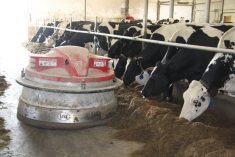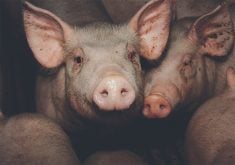DENVER, Colo. Ñ Canada must test a minimum of 50,000 cattle a year to gain a true assessment of its BSE prevalence, says an American consultant.
The Ranchers-Cattlemen’s Action Legal Fund wants to know the risk to the United States as the U.S. government prepares to allow Canadian livestock back in March 7, said the organization’s chief executive officer.
“The USDA has a duty to protect the health and safety of the United States cattle industry and the United States consumers,” said Bill Bullard at the organization’s annual meeting in Denver Jan. 20-22.
Read Also

Horses challenged when asked to be weekend warriors
Horses are creatures of consistency. Their bodies and nervous systems are designed for steady, rhythmic movement, low-intensity grazing and regular social interaction.
“The final rule will liberalize, relax those longstanding protections that have been scientifically validated and the most effective measures we have as an industry to protect ourselves against the introduction of BSE,” he said.
To back up its legal arguments in a complaint filed Jan. 10 opposing the U.S. Department of Agriculture rule that would permit more normalized cattle and beef trade with Canada, R-CALF contracted an independent risk analyst.
Private consultant John Cox said categorizing Canada as a BSE minimal-risk country is a faulty assumption.
The USDA said the ban on feeding cattle protein back to ruminants eliminates the risk of BSE, yet in Europe, cases continue to appear in animals born after the feed bans. This ties into the concern with the latest Canadian case in an animal born after 1997.
Cox said Canada has not tested enough. His numbers said Alberta tested 2,769 animals from 1996-2004. One case was found, which is not good odds. He suggested the rate could be much higher than what has been found to date.
“If the true prevalence is one in a million, you wouldn’t be finding the prevalence of cases at this rate.”
Cox suggested Canada should be testing a minimum of 50,000 animals per year and could go as high as 100,000 to prove the statistical expectation of one in a million. It is difficult to conduct proper risk analysis or assess all the future risk scenarios and probabilities without the proper numbers.
“Larger sample sizes are urgently needed,” he said.
In his opinion, looking at the rates of discovery and putting them in context with other countries, Canada should not be considered a minimal-risk nation. An observed rate of one in 3,000 could be extrapolated into a much higher level of BSE.
“There is an assumption that if there is mad cow out there you are going to catch her,” Cox said.
He suggested the prevalence is likely much higher than what was found through testing and finding the three cases in Canada might have been a fluke. Most of the cattle with BSE may not fall into the targetted group of the dead, dying, diseased or distressed, and could slip into the meat system.
According to Canadian Food Inspection Agency figures, Canada tested 23,550 animals in 2004 and Alberta tested 7,110.
Alberta’s 2005 target is 10,425 tests and nationally 30,000 will be tested.
Cox said Canada has tested 10 times fewer animals than Belgium where there are 1.5 million head. Belgium tested 300,000 and found 10 cases. Therefore, the true prevalence of BSE in Canada is probably close to the same levels found in Europe, he said.
If the U.S. returned to 2002 import levels from Canada, the chance of importing at least one case per year is a statistical certainty.
In addition, there should be questions and research into why Alberta appears to be a reservoir for the disease.
“To me, finding two positive cases in central Alberta in two months is not a good track record,” Cox said.
More needs to be learned about the effectiveness of the Canadian inspection system and the ability of the U.S. to monitor imported cattle.
Other questions needing answers are:
- Where is the disease coming from?
- Does the feed ban work?
- Is the rate of disease increasing or decreasing?
- What are the consequences for cattle and what is the actual transmission rate?
- What are the consequences to human health?















